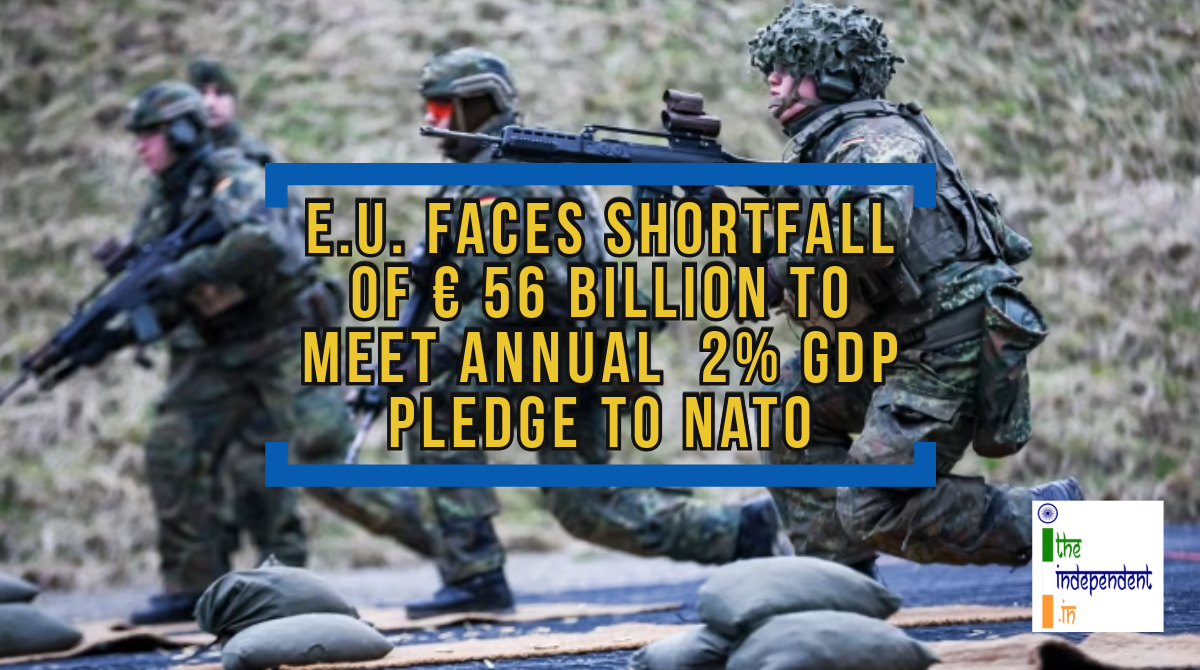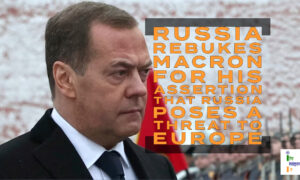
The E.U. members in NATO need € 56 billion a year to meet their target of 2% GDP contribution to NATO
The European Members in the North Atlantic Treaty Organisation (NATO) need to find an extra € 56 billion a year to meet the alliance’s defence spending target of 2% of their Gross Domestic Product (GDP).
According to research by Germany’s based Ifo Institute, many of the European Union (E.U.) Member States have the biggest shortfalls in NATO’s defence spending target like Italy, Spain and Belgium. These countries also have the highest levels of debt and budget deficits in Europe.
The United States (U.S.) push for boosting defence spending in response to Russia’s invasion of Ukraine is stoking budgetary pressures in Europe at a time when it is witnessing low growth, and many countries are tightening their fiscal plans.
The biggest shortfall by value was in Germany, which spent € 14 billion less than the expected target last year. The next largest European shortfalls were seen in the tune of € 11 billion in Spain, € 10.8 billion in Italy and € 4.6 billion in Belgium. These three Member States were among the 6 E.U. countries with debt above 100% of their GDP last year. Italy also had one of the highest budget deficits at 7.2% in the E.U. Its interest costs are set to rise above 9% of Government revenues this year. However, Poland is expected to spend more than 4% of its output on defence spending in 2024, the highest among the NATO members.
Speaking on the occasion, the Economist at Ifo Institute – Marcel Schlepper said, “Countries with high debt levels and high interest costs do not have much room to raise more debt, so the only real way to do it is to cut spending in other areas.”
However, due to increased U.S. push, there has been some improvement in the defence spending contribution. The spokesperson for the U.S. Department of State – Matthew Miller, acknowledged that there had been an improvement in E.U. efforts to get all NATO members to hit the 2% threshold.
The Former President of the U.S. – Donald Trump, has been very particular about the E.U.’s contribution to NATO. Recently, he said that Russia could do “whatever the hell they want” to NATO members who failed to meet spending targets. Last year, the U.S. made 2/3rd of the total € 1.2 trillion of NATO’s defence spending, which was more than double the € 361 billion amount spent by the E.U. members, including the United Kingdom (U.K.) and Norway combined.
Besides, the new E.U. fiscal rules, which come into effect next year, will lead to more budget cuts as countries will have to comply with a 3% limit on annual deficits and a 60% debt-to-GDP threshold. More than 10 countries in the bloc are expected to breach the annual deficit limit, which will probably result in sanctions by the European Commission.
Besides, according to Pantheon Macroeconomics, the Eurozone countries are on track to double their defence spending from € 150 billion in 2021 to € 320 billion in 2026. This week, Norway became the latest European NATO member to say it would meet the alliance’s 2% target in 2024. Despite being home to NATO’s headquarters, Belgium’s defence spending was only 1.21% of GDP last year, one of the lowest in the alliance. Spain was not much higher at 1.24% and Italy was at 1.47%.







